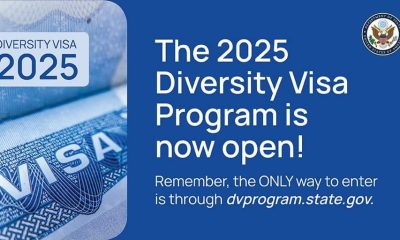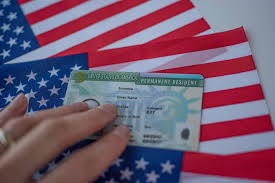Travel
How to Obtain a Work Permit in Canada: A Step-by-Step Guide
Canada, renowned for its stunning landscapes and thriving economy, is also one of the top destinations for professionals seeking work abroad. Whether you’re drawn to the tech industry in Toronto, the oil and gas sector in Alberta, or the vibrant start-up scene in Vancouver, a work permit is your gateway to pursuing employment in Canada. This guide will walk you through the essential steps to obtain a work permit in Canada.
How to Obtain a Work Permit in Canada: A Step-by-Step Guide
Types of Work Permits in Canada
There are two main types of work permits you can apply for:
- Employer-Specific Work Permit: This permit allows you to work for a specific employer, at a specific location, for a specific period. You’ll need an official job offer and other documents from your employer before applying.
- Open Work Permit: This permit is not tied to a specific employer, allowing you to work for any employer in Canada. It’s typically available for certain individuals, like spouses of international students or skilled workers, refugees, and participants in specific international agreements like the International Experience Canada (IEC) program.
Step-by-Step Process to Obtain a Work Permit
Step 1: Determine Your Eligibility
To apply for a Canadian work permit, you must meet basic eligibility criteria, including:
- Proof of a job offer (for employer-specific permits).
- No criminal record or proof of rehabilitation.
- Being in good health, demonstrated by a medical exam, if required.
- Proof that you will leave Canada when your work permit expires (unless applying for permanent residency).
- Proof of financial stability to support yourself during your stay.
Step 2: Obtain a Job Offer
For employer-specific work permits, the first step is securing a valid job offer from a Canadian employer. In most cases, employers must also obtain a Labour Market Impact Assessment (LMIA), which is a document that proves no Canadian citizen or permanent resident can fill the position.
Step 3: Check if You Need a Labour Market Impact Assessment (LMIA)
An LMIA is often a key requirement for obtaining a work permit. The employer will submit an application to Employment and Social Development Canada (ESDC) to get an LMIA, after which you can proceed with your work permit application.
However, not all jobs require an LMIA. For example, jobs under international agreements, such as the Canada-United States-Mexico Agreement (CUSMA), may be LMIA-exempt. Similarly, certain academic, religious, or charitable work can also be exempt.
Step 4: Gather Required Documents
The next step involves gathering all necessary documents, which include:
- Job offer letter: This outlines the terms of employment.
- LMIA number (if applicable).
- Proof of identity: Valid passport or travel document.
- Proof of qualifications: Diplomas, certificates, or any required job-specific credentials.
- Proof of work experience: Letters from previous employers, contracts, or pay stubs.
In some cases, additional documents may be required, such as a police clearance certificate or a medical exam.
Step 5: Apply Online or In-Person
You can apply for a work permit either from outside Canada, inside Canada, or when you enter the country at a port of entry (for eligible individuals).
How to Apply Online:
- Create an account on the Government of Canada website.
- Complete the work permit application form and upload the required documents.
- Pay the application fees (CAD 155 for the permit and CAD 85 for biometrics).
- Submit your application.
How to Apply In-Person: If you’re eligible to apply at a port of entry, bring your documents with you when entering Canada, and an immigration officer will process your application on the spot.
Step 6: Provide Biometrics
As part of the process, you will be required to provide biometrics, which includes fingerprinting and photographs. You can do this at a Visa Application Centre (VAC) near you.
Step 7: Wait for Approval
Processing times vary depending on your country of origin and the type of work permit you’re applying for. You can track your application status online.
If your application is approved, you will receive a Port of Entry (POE) Letter of Introduction, which you must present to an immigration officer when you arrive in Canada. You will also receive your work permit at this time.
Step 8: Arrive in Canada
Upon arrival, you’ll need to present your POE Letter of Introduction, passport, job offer letter, and any other supporting documents to the border services officer. If everything is in order, you will be granted your work permit.
Special Pathways and Programs
Canada offers several special programs that streamline the process for certain professionals:
- Global Talent Stream (GTS): Designed to bring highly skilled workers in tech and engineering fields into Canada quickly.
- International Mobility Program (IMP): Offers LMIA exemptions for workers who are beneficial to Canada’s economy, including intra-company transferees.
- Post-Graduation Work Permit (PGWP): Available to graduates of Canadian post-secondary institutions, allowing them to gain Canadian work experience.
How long does the work permit process take in Canada?
The processing time for a Canadian work permit can vary significantly.
It depends on several factors, including:
- Type of application: Different types of work permits have varying processing times.
- Completeness of your application: If your application is missing required documents or information, it may take longer to process.
- Volume of applications: Processing times can fluctuate based on the number of applications IRCC receives.
Generally, processing times can range from a few weeks to several months. For the most accurate and up-to-date information, you should check the official Immigration, Refugees and Citizenship Canada (IRCC)
Please note:
These are general estimates, and individual processing times may differ. It’s always recommended to apply well in advance of your planned arrival date to allow for potential delays.
Can I apply for a Canada work permit without a job offer?
Yes, you can apply for a Canada work permit without a job offer.
However, the specific requirements and eligibility criteria will depend on the type of work permit you are applying for.
Here are some common scenarios where you might be able to apply for a work permit without a job offer:
- Post-Graduation Work Permit (PGWP): If you have graduated from a designated learning institution (DLI) in Canada, you may be eligible for a PGWP. This allows you to work in Canada for up to three years after completing your studies.
- Spouse or Common-Law Partner Work Permit: If you are the spouse or common-law partner of a person who is already in Canada on a work or study permit, you may be eligible for a work permit.
- International Experience Canada (IEC): This program is for young people aged 18-35 from participating countries. It allows you to work in Canada for up to 12 months without requiring a job offer.
- Provincial Nominee Programs (PNPs): Some PNPs allow you to apply for a provincial nomination, which can help you expedite your application for a work permit.
It’s important to note that these are just a few examples, and the specific requirements may vary depending on your individual circumstances.
How much money is required for a work permit in Canada?
The cost of a Canadian work permit varies depending on the type of permit you are applying for and your specific circumstances.
Here are some general fees you might encounter:
- Work permit fee: This is the main fee charged by Immigration, Refugees and Citizenship Canada (IRCC) for processing your work permit application. The exact amount will depend on your application type and whether you are applying from within or outside Canada.
- Biometric fees: If required, you will need to pay a fee for biometric collection (fingerprints and photograph).
- Medical exam fee: If a medical exam is necessary, you will need to pay the fees associated with the exam.
- Additional fees: Depending on your situation, you might incur additional fees, such as translation fees or fees for supporting documents.
It’s important to note that these fees can change, so it’s always best to check the official IRCC website for the most current information.
Conclusion
Obtaining a work permit in Canada is a structured yet straightforward process if you follow the correct steps. By securing a valid job offer, ensuring eligibility, and preparing the necessary documents, you can set yourself on the path to working and living in one of the world’s most attractive destinations for skilled professionals. Whether you’re aiming for temporary work or seeking a longer-term opportunity, a Canadian work permit is a valuable stepping stone to building a career in a dynamic, multicultural environment.










